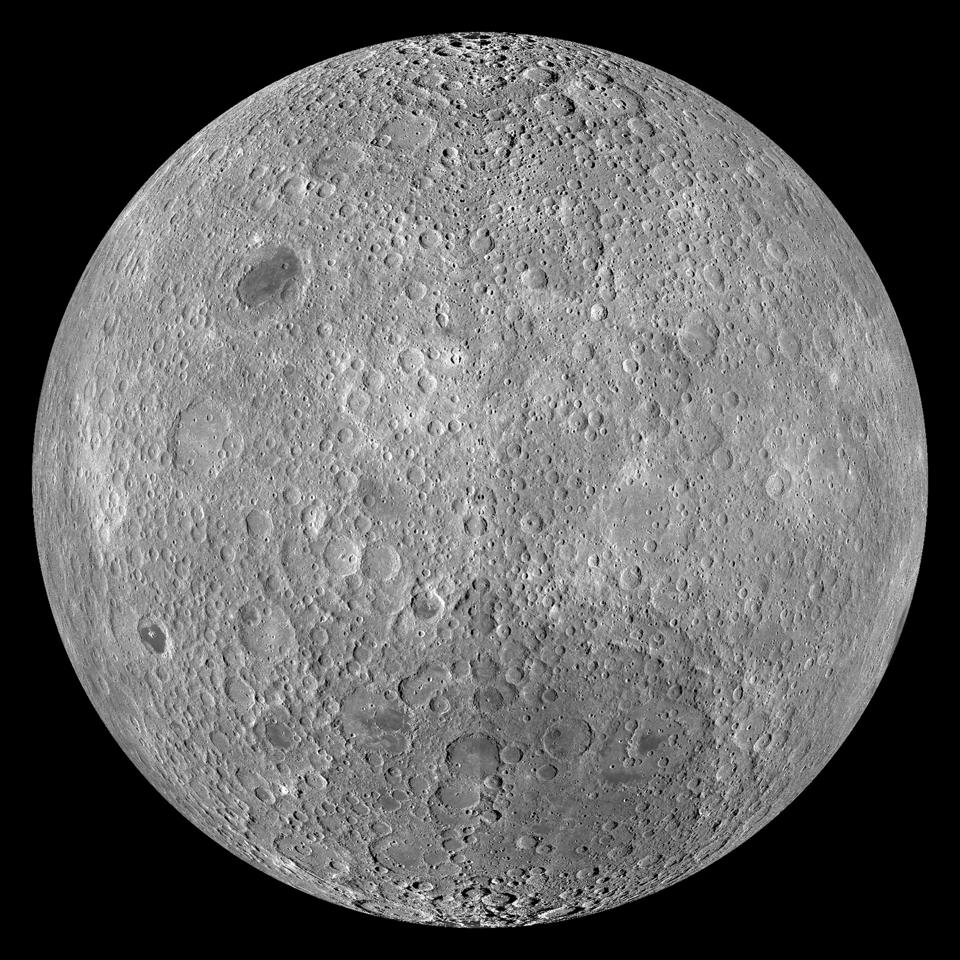The dark side of the moon is real — but it’s probably not what you think.
There’s always an unseen side to the moon because it’s tidally locked to Earth, so it rotates just once during its monthly orbit. Consequently, we always see the same features on the moon, leading many to ponder what’s on its dark side.
The Moon’s Far Side
That question is flawed, commonly referring to its far side, the side we never see — but it’s no darker than the side facing us. Half of the moon is always illuminated by the sun, as it orbits Earth, we see a different percentage lit. This week, a narrow crescent moon is growing in the western sky after dark, beginning its 29-day journey around Earth. Right now, its far side is almost entirely lit up. Only briefly during the next full moon on Dec. 4 will its far side be completely dark.
Lunar Night And ‘Earthshine’
After sunset this week, the crescent moon’s dark side — the night side of the moon — will glow with subtle “Earthshine.” Earthshine is sunlight reflected from Earth to the moon and back again, lighting up the lunar night. It makes the otherwise invisible part of the moon subtly visible, a quiet effect that lends the entire disk a ghostly appearance. No telescope is required — though binoculars will make the effect stand out. You’re seeing light that has made the long journey from the sun to Earth, from Earth to the moon and from the moon back to your eyes.
Where And When To Look
Begin watching shortly after sunset. The moon will be low in the southwest, glowing in twilight. You’ll see a slim, bright crescent — the part directly lit by the sun — but the full round shape of the moon may also be visible as a soft grey glow.
A location with a clear view to the southwest is essential. Overhead, look for the Summer Triangle, a trio of bright stars made up of Vega, Deneb, and Altair. Altair sits closest to the moon, while Vega and Deneb point down toward it as the sky darkens.
What You’ll See
The sunlit crescent will shine brightly, but look carefully, and you’ll notice the full circle of the moon, dimly outlined — that’s Earthshine at work. It recedes as the moon grows for two reasons. Firstly, when the moon is near new and thinnest in phase, Earth appears almost full from the moon’s perspective, so it sends back the maximum amount of reflected light. Secondly, as the moon grows in illumination, it begins to overwhelm our eyes, so after a few nights it becomes impossible to detect “Earthshine” — but it’s still there.
What’s Next In The Night Sky
Late November is a fabulous time to get re-acquainted with the night sky — and the moon and planets, in particular. After observing the dark side of the moon, swivel 180 degrees to face east, and you’ll see a very bright Jupiter rising into the sky. Also, have a look for Uranus if you’re under a very dark sky. Later in the week, Mercury makes a rare naked-eye appearance near Venus in the pre-dawn eastern sky, peaking on Nov. 30.
The times and dates given apply to mid-northern latitudes. For the most accurate location-specific information, consult online planetariums like Stellarium.
Wishing you clear skies and wide eyes.

